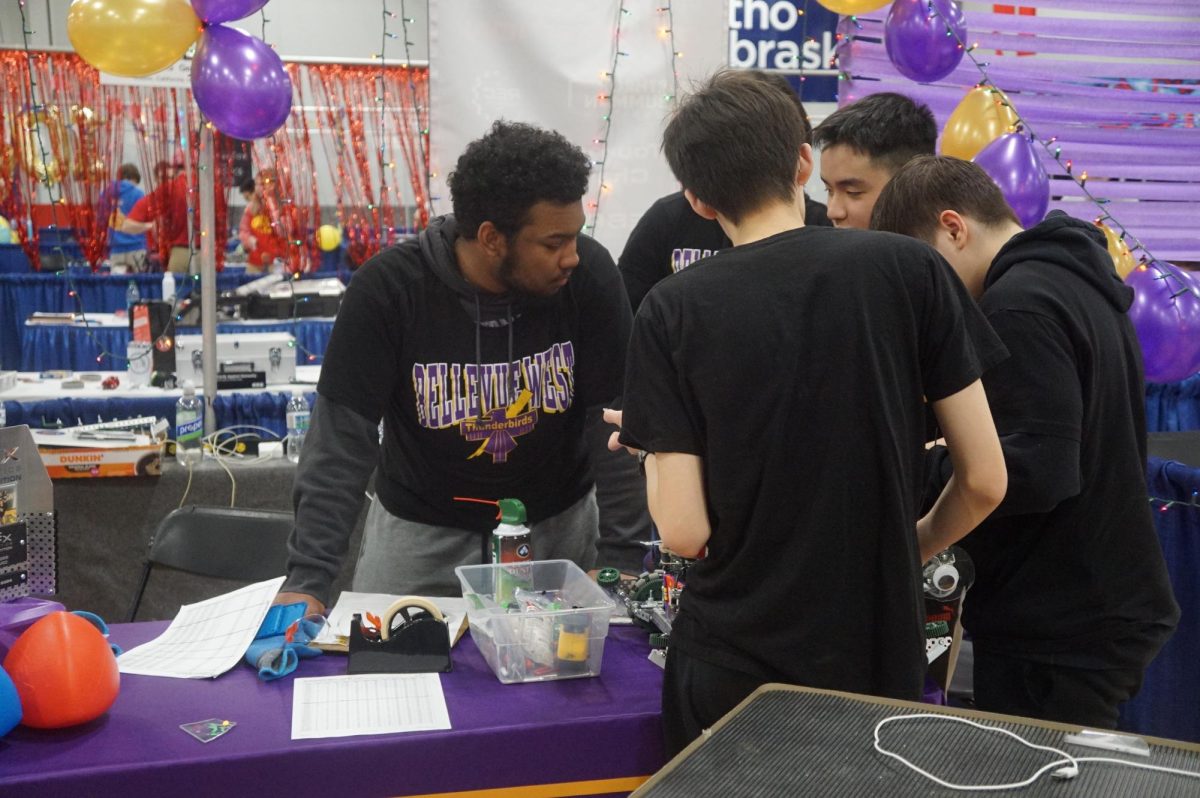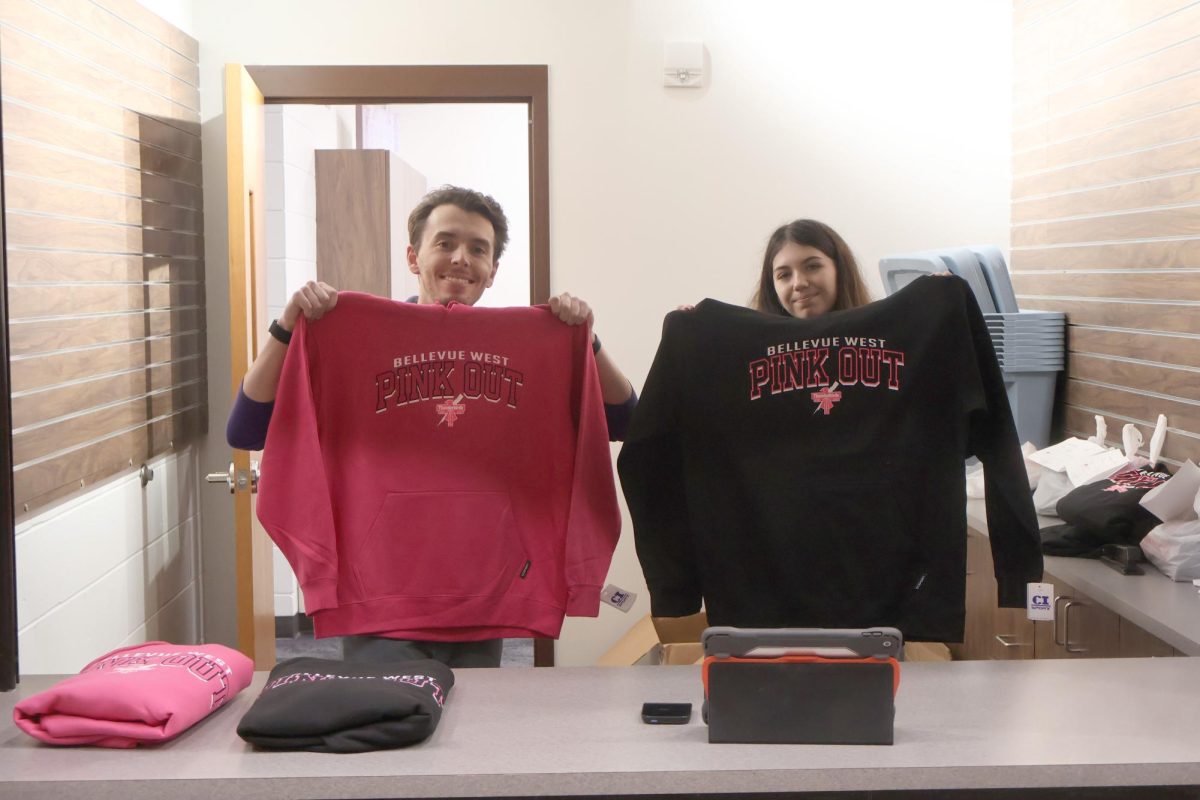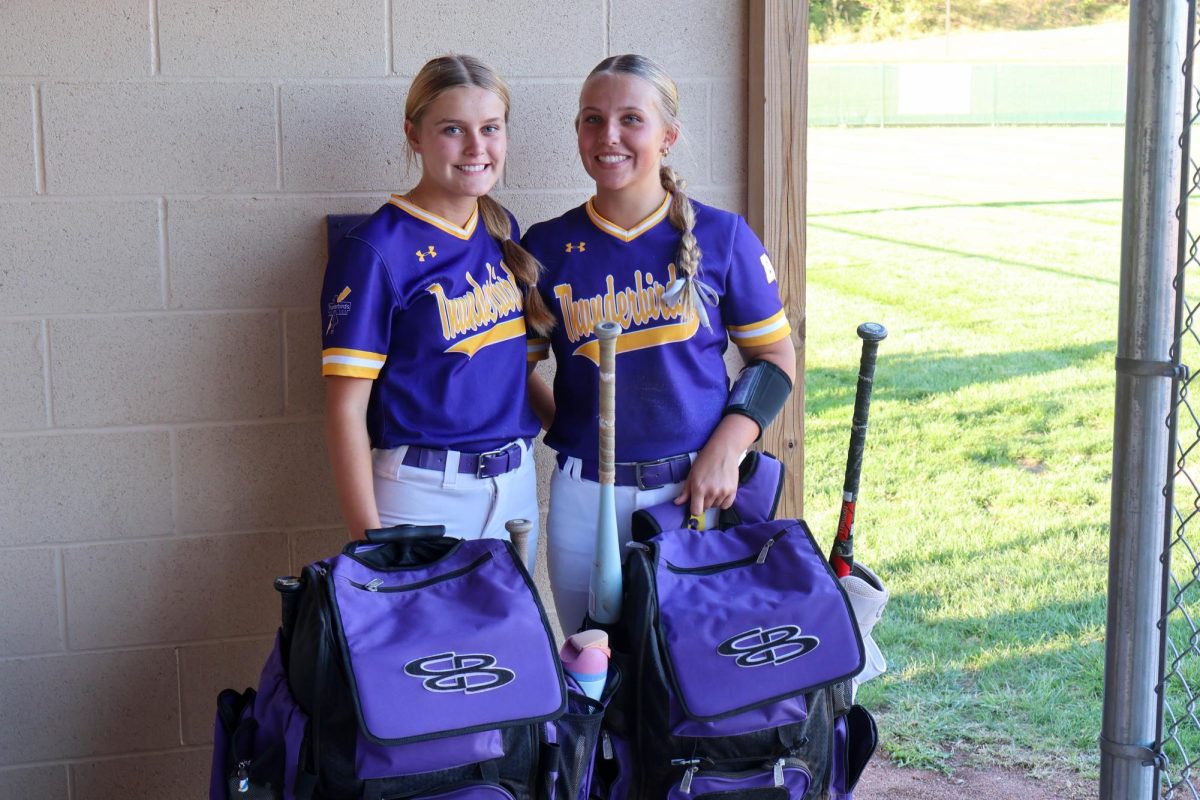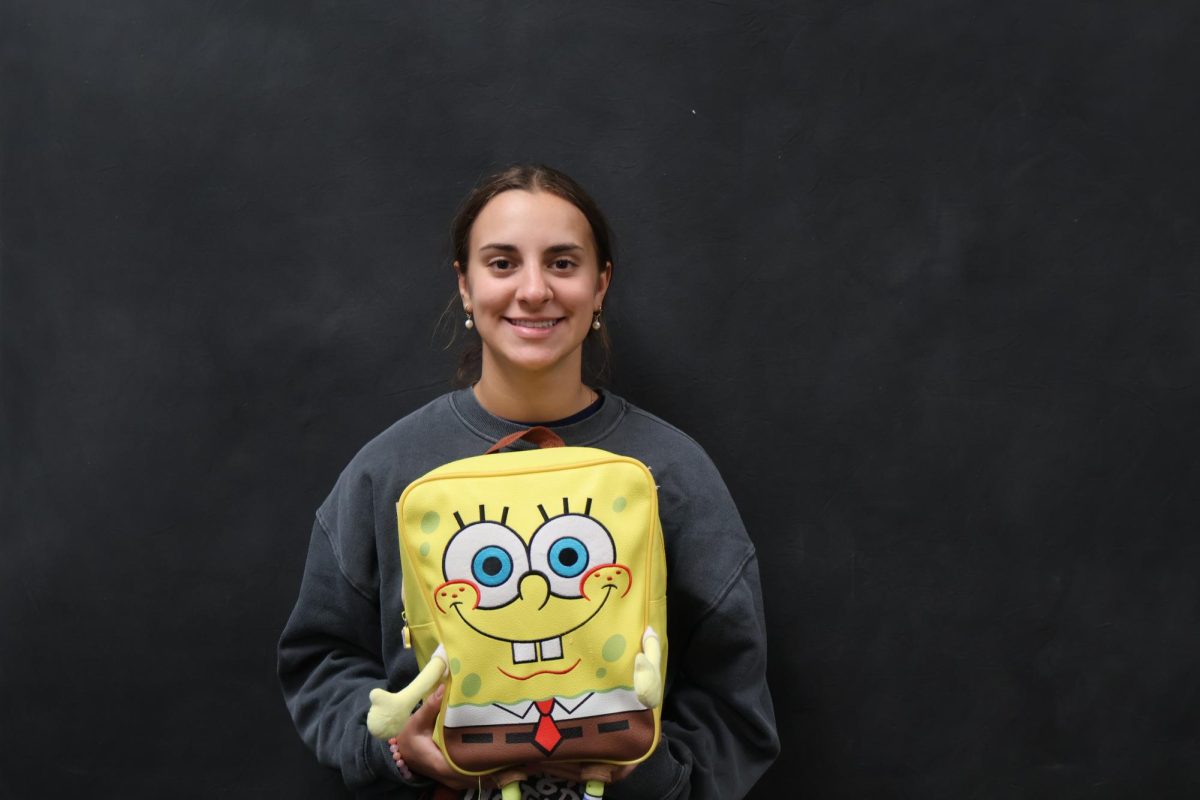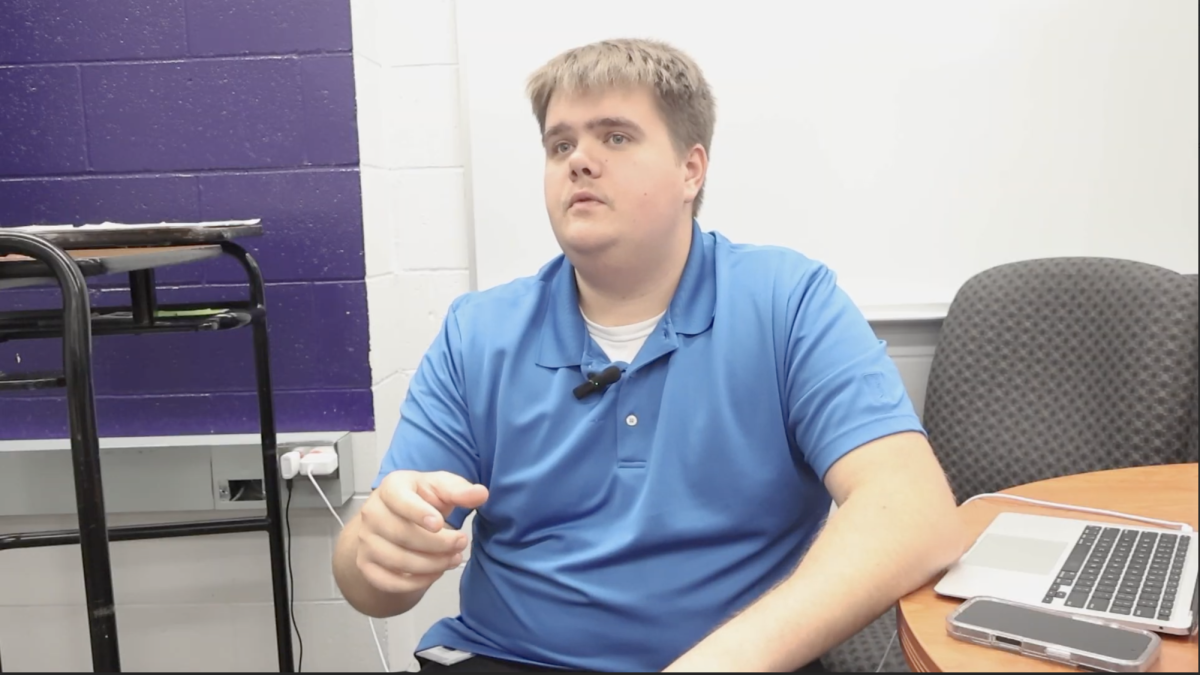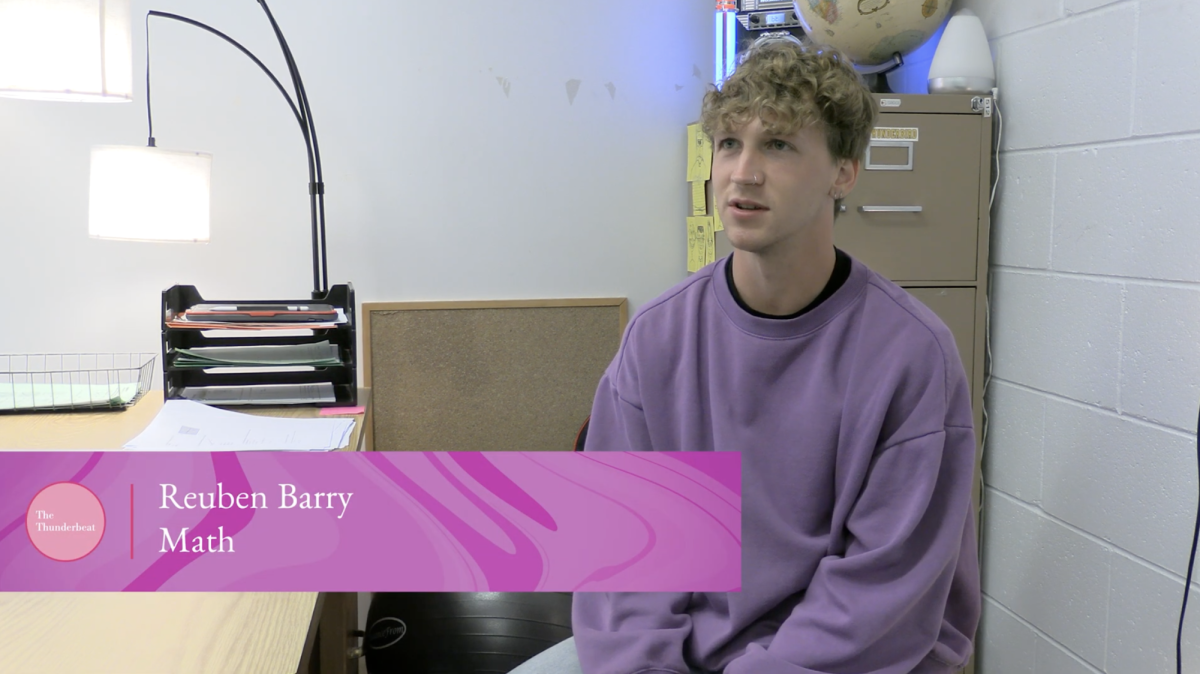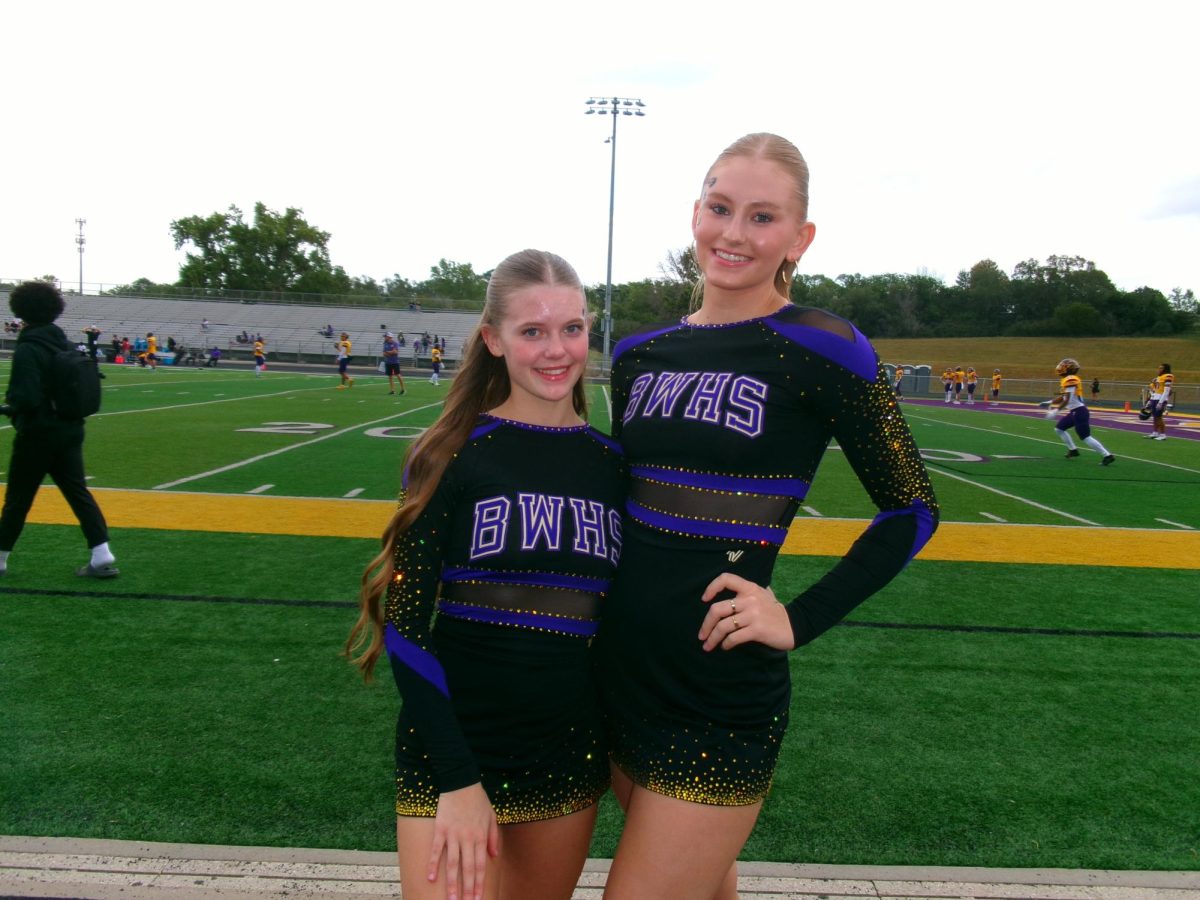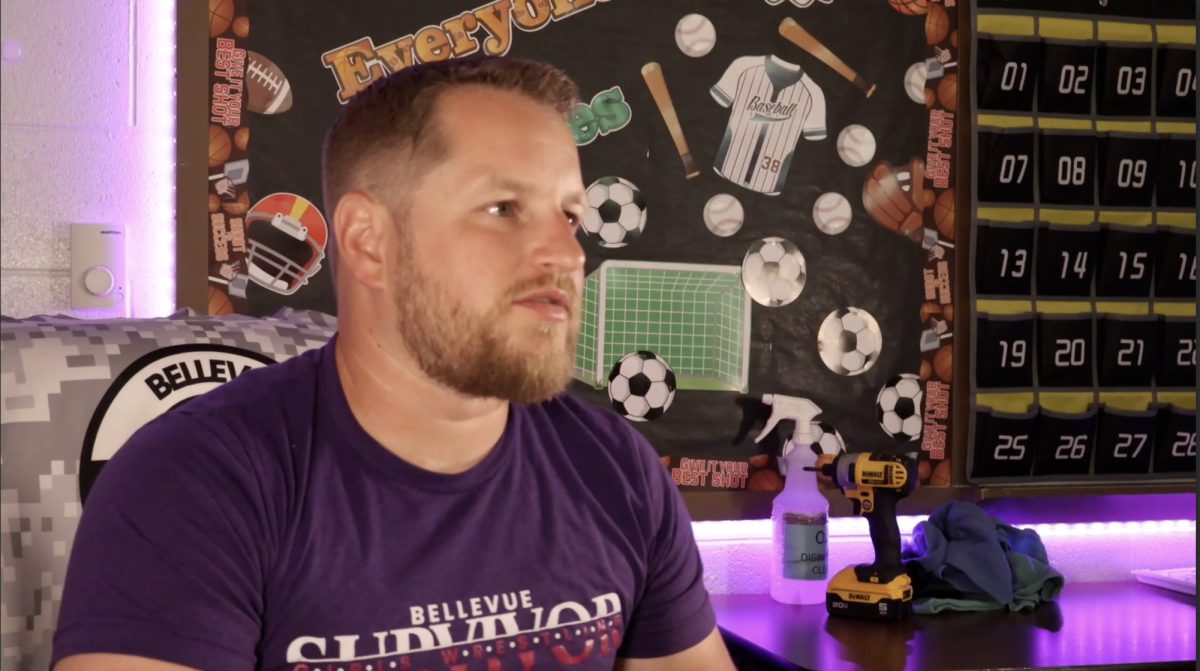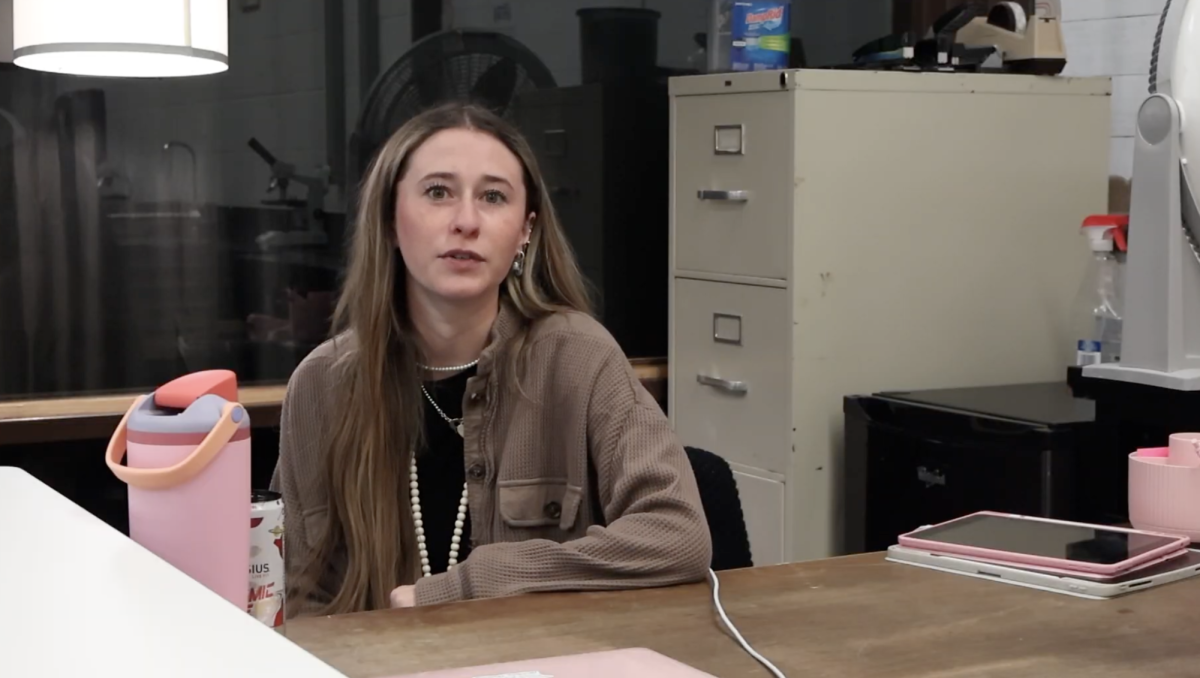There is a distant whir of robots driving around as students clad in colorful ensembles of clothes that represent their schools prepare for their matches. The buzz of adrenaline and excitement is manifested through frenzied chatter from teams.
One walk around the large room will result in seeing dozens of decorated tables of schools from all over the world. Teams from China and New Zealand alike all traveled to Council Bluffs, Iowa for the Competitive Robotics Enhancing and Advancing Technology Education (CREATE) U.S. Open Robotics Tournament on March 15.
The Bellevue West Robotic Team sits at their team table, which is decorated with purple and yellow balloons. Some of them are putting finishing touches on the team’s robot, while others are checking match times.
Matches were split up throughout the day, and the Bellevue West team competed in over ten matches.
To qualify for the tournament, a team has to win an award at a separate competition.
The Bellevue West team won the Design award at the Brownell-Talbot competition and were able to qualify.
Junior John Tonn has been on the Robotics team for two years. The team won the Design award due to their engineering notebook, which was chiefly designed by senior Nguyen Phan.
“He made a really good engineering notebook,” Tonn said. “To get the design award, they look at that engineering notebook and evaluate how well it’s put together and ours happened to be the best.”
This is the first award the robotics team has won in ten years, and the first time a team has made it to the U.S. Open.
There is a lot of work that goes into creating a robot that is competition ready. The team finds out what the competition is going to be in the spring.
They then start with a five step design process. They come up with the design from scratch, and put all the different plans in a notebook. They had to take into consideration how it would work with other teams, and how the other teams would design their robots. Sometimes they look to YouTube for inspiration.
As the team researches and comes up with designs, they have to start looking for buying parts. All of these have to be VEX certified. VEX is a subsidiary of Innovation First International, Inc., a company specializing in producing parts for robotics competition
Robotics coach Dan Parkison said getting funding for specific VEX parts can be difficult.
This year, the team got pneumatics for their robots, which is where the robot uses compressed air to control movements. This cost more money than the usual parts the team uses.
“The worrying part comes when I have to fund a robotics team next year with less money,” Parkison said.
Senior Nguyen Phan has been on the robotics team for three years.
“I feel like this year was way more different for us in the way our bot competed against other bots,” Phan said. “Last year, our bot didn’t feel as competitive as the bot we have now.”
Competing at the U.S Open came with a whole different wave of competition.
The competition allowed teams to choose who they wanted to create an alliance with after qualification matches.
During the competition, a team from Texas declined an offer from another competitor specifically so they could be in league with the Bellevue West team.
People on the team are assigned different roles such as builders, programmers, scout, and pit stoppers. Some students are more hands on during matches than others.
The first fifteen seconds of each match starts with the robots being completely dependent on their code. Whichever team scores more in those fifteen seconds gets the autonomous bonus, which is added to their score at the close of the match.
“Sometimes our code works, sometimes it breaks,” Phan said. “Honestly it’s luck.”
Phan works with the handheld device to control the robot. The school doesn’t have a full field to practice on, so the team makes do.
“It’s like playing football in your backyard rather than an actual field,” Phan said.
Tonn reflected on his favorite part of the U.S. Open.
“My favorite part of the competition was honestly just seeing my senior friends Nguyen and Khang,” Tonn said. “They worked really hard to get to the point that they’re at and they always wanted to go to the U.S. Open.”
Parkison sees an extensive value in robotics.
“Robotics definitely provides students hands on experience in the engineering field,” Parkison said. “They have to have the ability to think on their feet when things don’t go as planned. No other activity can provide that experience.”


